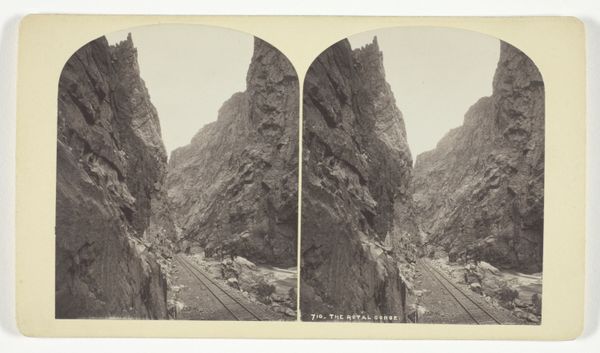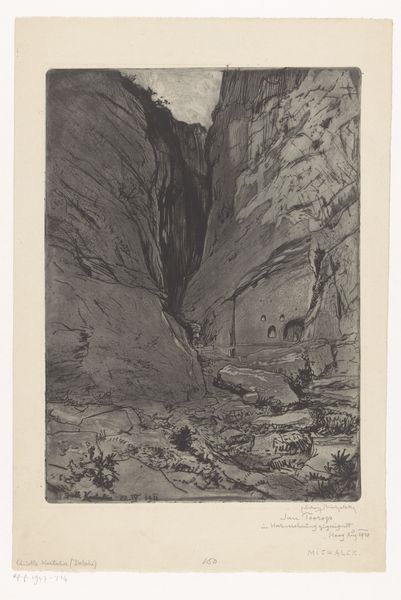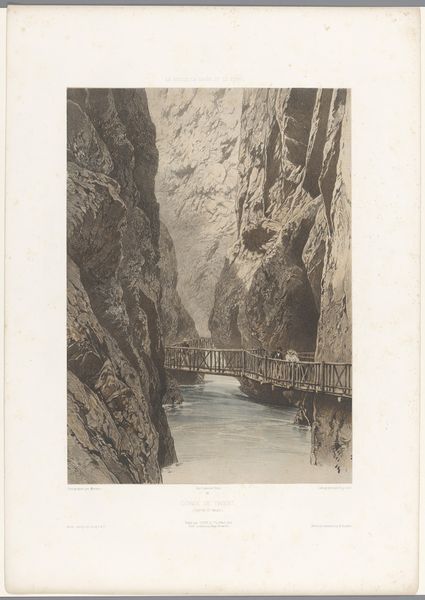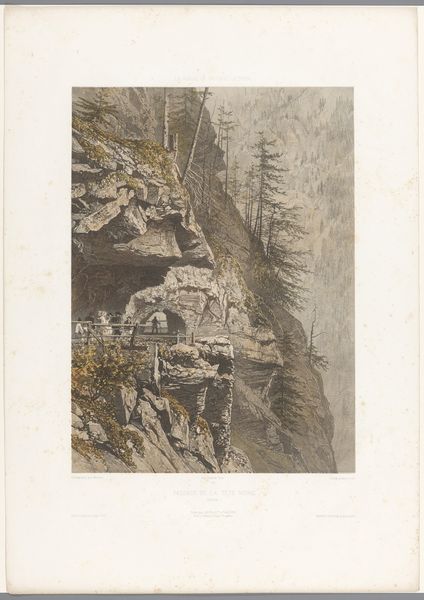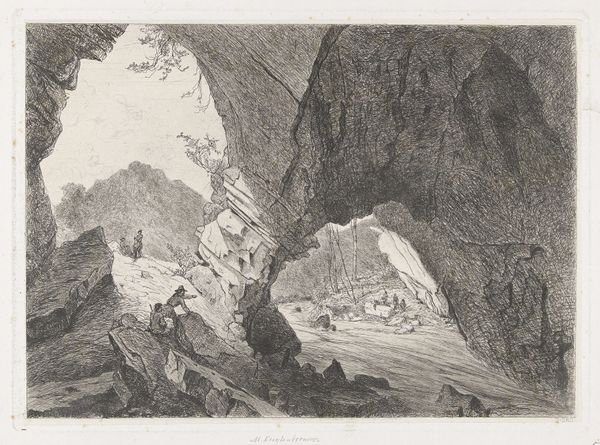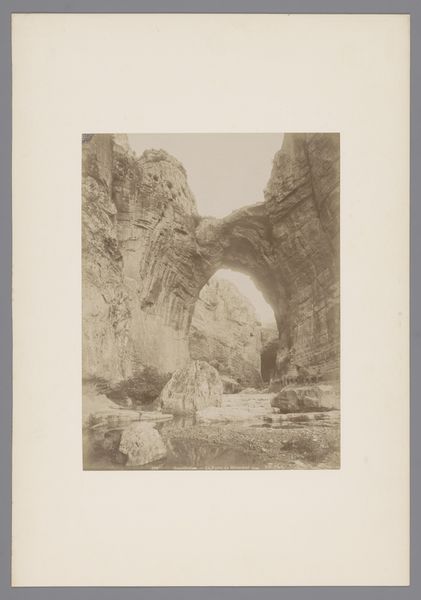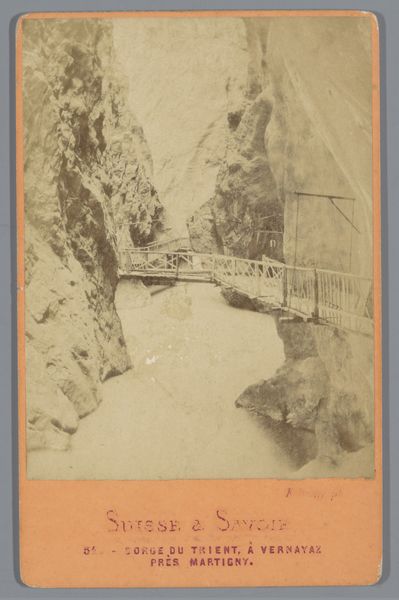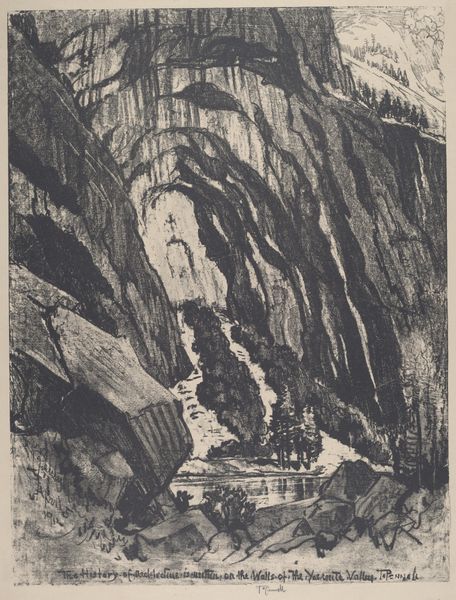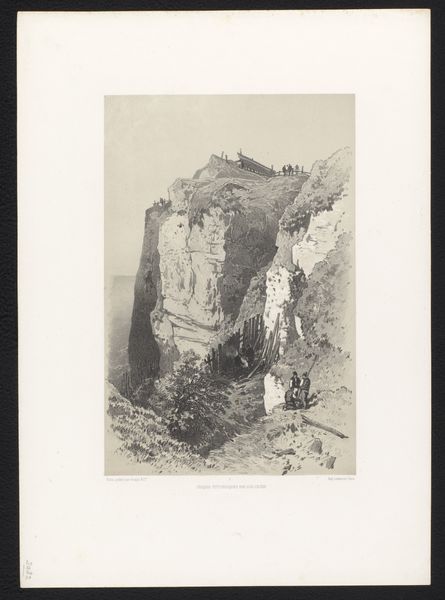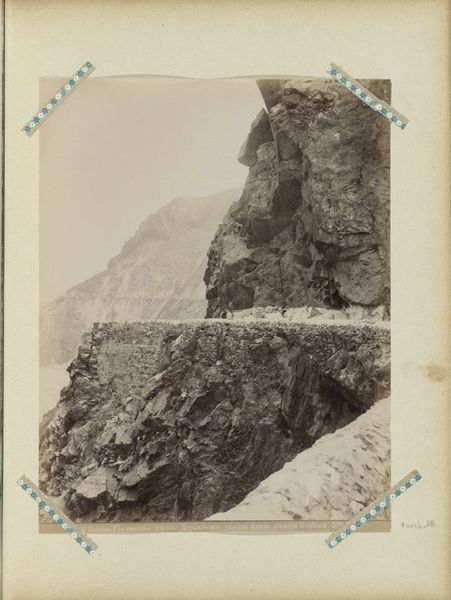
photography
#
landscape
#
photography
#
hudson-river-school
#
realism
Dimensions: height 93 mm, width 64 mm
Copyright: Rijks Museum: Open Domain
Editor: Here we have a photograph entitled "Weg door de rotsformatie Ros Beiaard aan de Maas in Dinant" – or, “Road Through the Ros Beiaard Rock Formation on the Meuse in Dinant,” captured sometime between 1860 and 1890, by Jules Hallez. The sepia tones give it such a hauntingly romantic feel, almost like stepping back in time. Those monolithic rock formations dominate everything. What leaps out at you when you look at it? Curator: It’s funny you say romantic because I almost feel a starkness, a kind of loneliness. Perhaps it's the monochromatic palette playing tricks. But those imposing rocks *do* have a story to tell, don't they? See how the road just *barely* manages to carve a path between them? There’s a struggle, almost. A tension between the indomitable force of nature and human endeavor. Notice also, there's almost a human element in the rock itself. Doesn’t the light fall to make that archway almost look like an eye, gazing back at the viewer? It’s as if the landscape itself is a character. Editor: I hadn’t really noticed the human presence in the rock – very perceptive! I guess I was so focused on the more immediate "beauty" of it. Curator: That's the delightful thing about art, isn't it? What at first appears serene or dramatic can hold multiple stories. And our own feelings… Well, they just become another layer in the artwork, another color on the canvas of experience. Editor: That’s so true! It's less about "getting it right" and more about opening a dialogue. I see so much more now. Thanks for making me see it differently. Curator: Anytime! And who knows? Maybe next time, you'll be showing *me* a new road through an old photograph. The real magic of art lies in those endless exchanges.
Comments
No comments
Be the first to comment and join the conversation on the ultimate creative platform.

